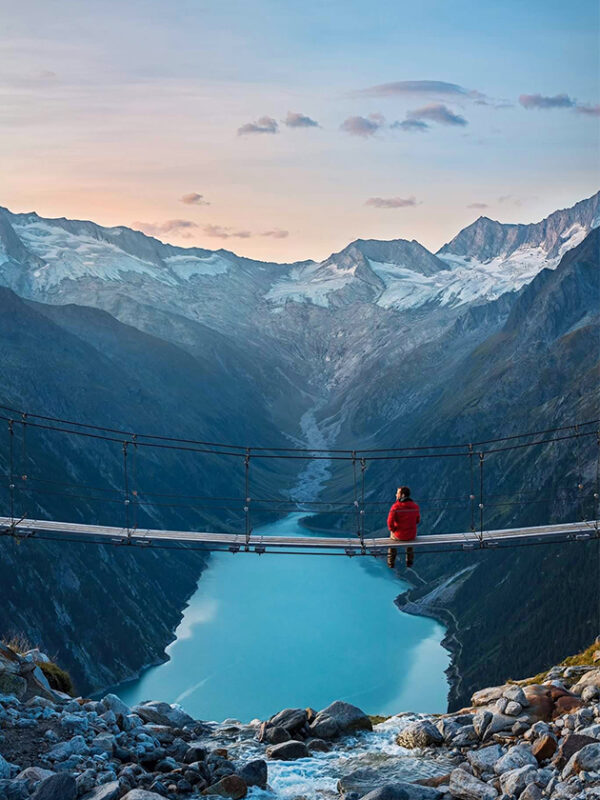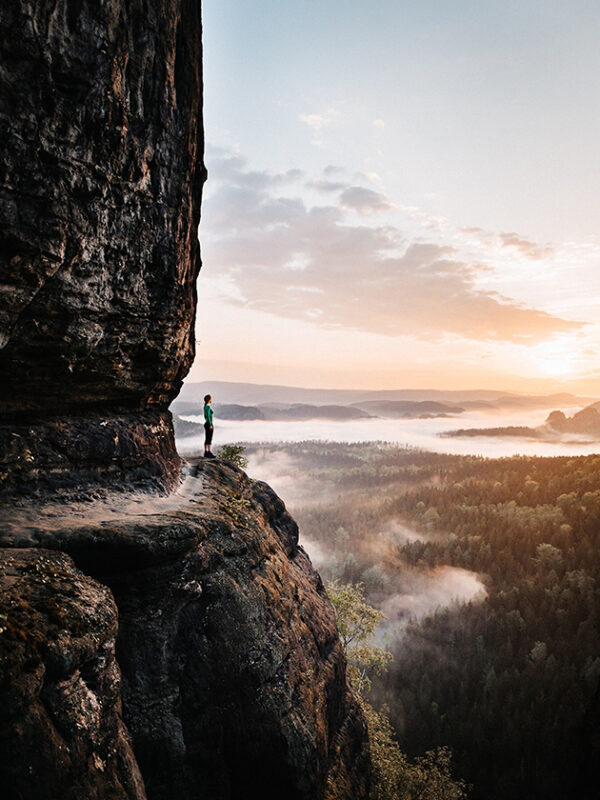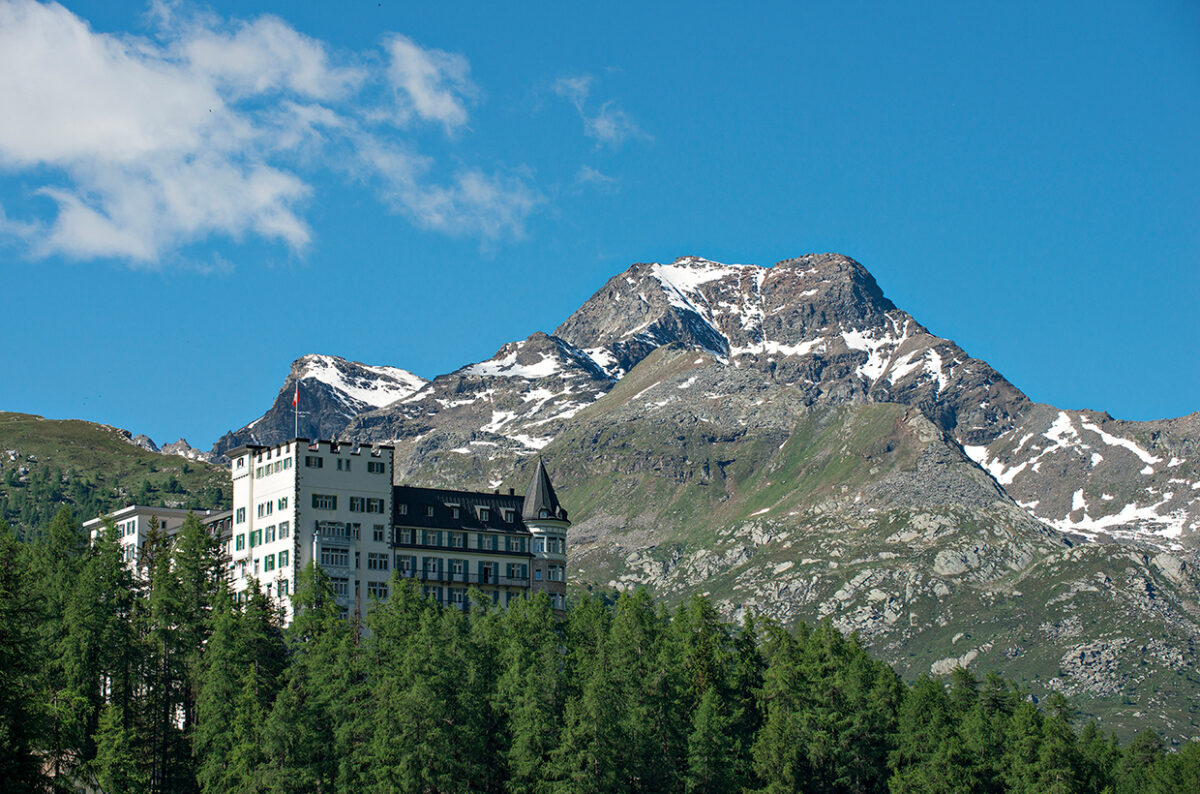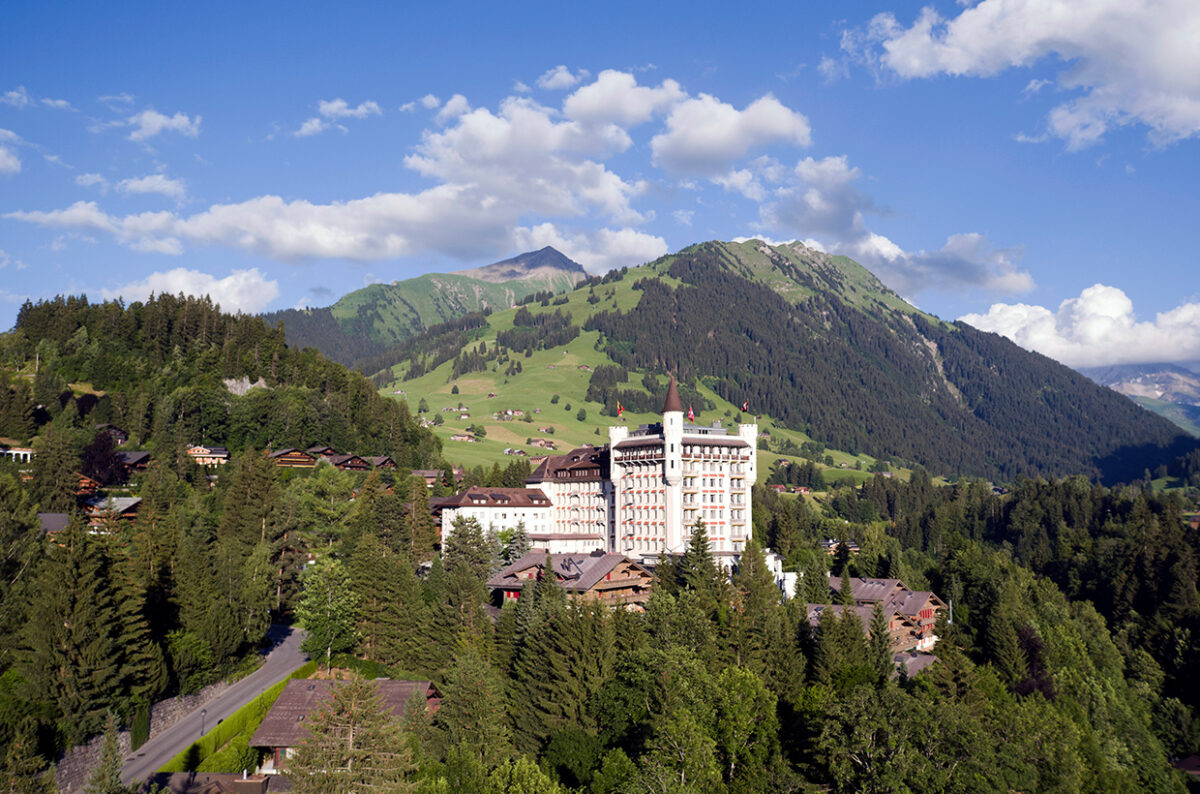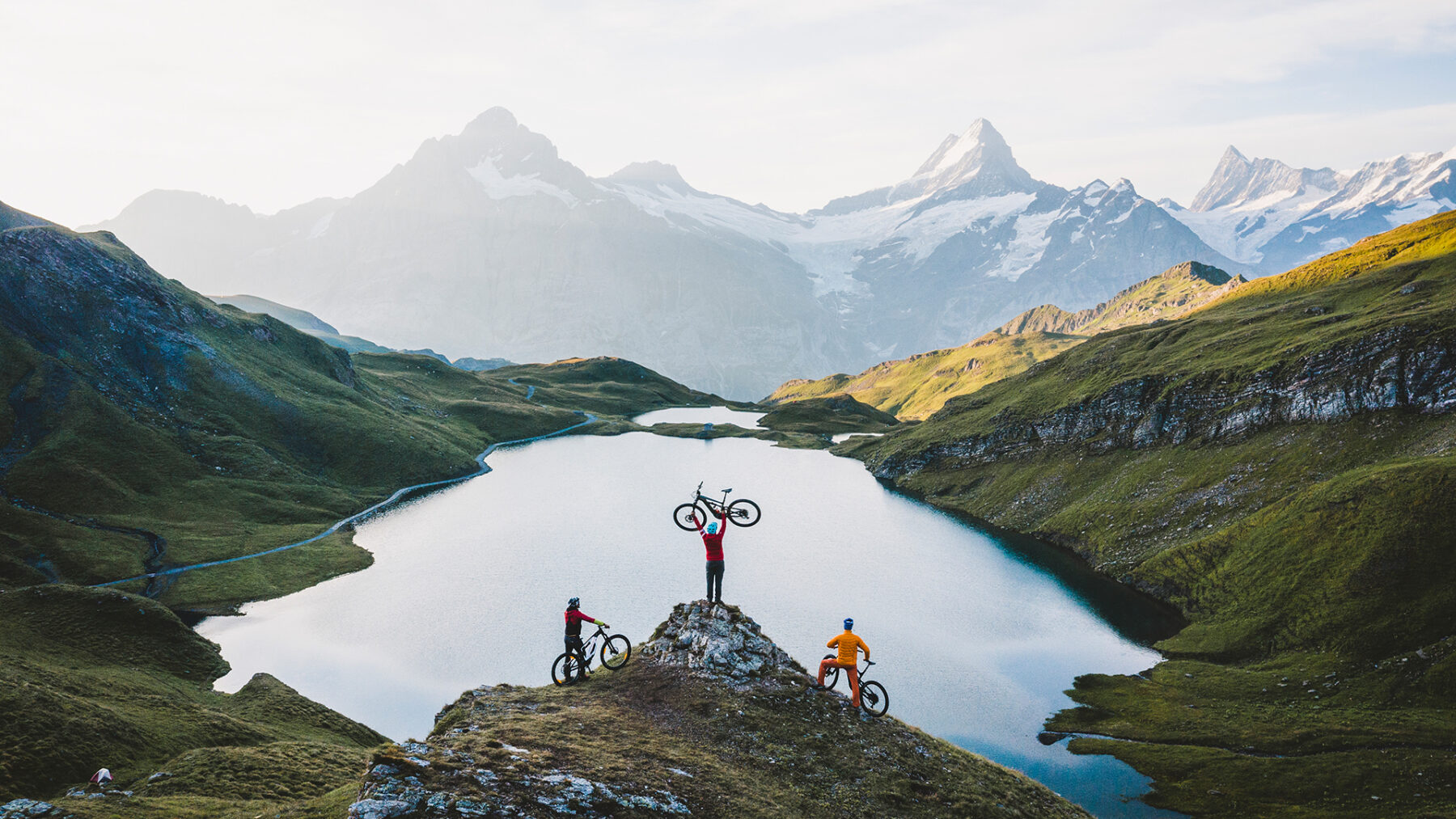Let's go high by Steffi Kammerer | 3rd June, 2022 | Travel
There’s no better place to relax than up in the mountains – where nature realigns what’s out of place and magnificent views deliver clarity. For years, the Alps were mainly regarded as a wintertime destination. Until now…
Some places stay with you even when you’ve left them behind. This nostalgic sentiment makes people return time and again to the Waldhaus luxury hotel in Sils Maria, Switzerland – a stronghold standing above two mountain lakes at over 1,800 meters. Wide corridors, thick carpets, rocking chairs beside tall windows, books to win a bibliophile’s heart and a 100-year-old Steinway grand. People have been unwinding here since before the concept even existed. Tea and scones are served in the afternoons while live music plays in the background. Otherwise, it’s extraordinarily peaceful, apart from the muted sound of conversation and the rustling of myriad newspapers.
Very little has changed here in the mountains since the hotel first opened its doors in June 1908. The Waldhaus has been remodeled countless times since then, but always – and this is the genius of it – in a way that is virtually unnoticeable. Owned by the same family from the beginning, it is currently run by the fifth generation, who personally greet and bid their guests farewell just like their ancestors before them. The share of regular guests is 80 percent. More than other establishments perhaps, the Waldhaus has always drawn intellectuals: publishers, writers, philosophers, directors, composers. Industrialists. Nobel Prize winners. Back then, people often stayed for several months, as evidenced by the five-door closets.
This summer, the Waldhaus is opening for its 115th season. A path leads down through the cool forest to the yoga deck on Silsersee Lake. You can sail or surf on Silvaplanersee Lake, or rent a kayak or canoe. And those who aren’t too timid are welcome to take a dip in the icy water. The days pass pleasantly in this way, interrupted only by a game of tennis or golf, a horseback trail ride or a trip into the mountains. Electric mountain bikes are available for guests who would otherwise be daunted by the hilly terrain. You can also just look out of the window and enjoy the green of the fir trees and meadows, the blue of the water and the white of the glaciers – a color combination that never loses its appeal.
“Summer has an extra dimension because of the colors, which are missing in the winter.” URS KIENBERGER
It wasn’t until the 1960s that the Waldhaus started opening in the winter season too. “The hotel was originally designed for the summer, you can still tell in a way. It really comes into its own in the summer,” say Urs Kienberger, who ran the hotel for many years and whose great-grandparents established it. “Summer has an extra dimension because of the colors, which are missing in the winter.” Tourism in the Engadin began when it started to become popular to leave the city during the summer and retreat into the country. Friedrich Nietzsche spent seven summers in Sils in the 1880s, walking along the lake shore every day with his red parasol. St. Moritz, a mere 10 kilometers away, was already well-known worldwide as a spa. During the summer months, it drew mainly aristocrats and wealthy English, who, after an arduous journey, often stayed until the fall. That people starting going in the winter was the result of a wager, which attained legendary status. In 1864, Johannes Badrutt, founder of the Kulm Hotel, (a relatively new establishment at the time), promised a few of his English guests that if they returned in the winter, they could sit in the sun in their shirtsleeves. Should this not be the case, he would reimburse their travel expenses. His guests took up the wager, returned to St. Moritz and went back to London with a tan. Imitators followed suit and the result was a winter season that outperformed everything else. The mountains were now synonymous with snowy pistes and extravagant parties.
For a long time, people seemed to have forgotten that the Alps in the summer were perhaps even more beautiful than in the winter. Walking in the mountains appeared to be something only retired people did. But that began to change even before the epidemic started. Those who owned a chalet in the mountains withdrew there during lockdown, and ended up staying. Others realized, perhaps for the first time, how beautiful their own country was. Maybe they even noticed that the mountains were at least as restorative as the beach. And that to find happiness, you didn’t have to travel halfway around the world.
The power of the mountains. Their tranquility pervades us and makes us strong. Gazing at the majestic peaks, we feel our day-to-day problems fall away. Seeing the big picture helps to put things into perspective. Conquering the mountain is intoxicating, it makes every fiber of our being come alive. To switch off in the mountains is to concentrate on what is important, one step at a time.
During the summer months, the Gstaad Palace hotel in Berner Oberland, Switzerland, rents out a jewel of a mountain hut dating from 1783: the Walig Hütte, which represents a completely new type of luxury. There’s nothing to see except the spectacular panorama. Reservations for the Walig, which Condé Nast Traveller designated “Best Wilderness Hotel,” fill up quickly, although there is no shower and only an outhouse rather than a spa area. For this back-to-basics experience, Palace guests spend 1,800 Swiss francs a night for two. There may be no internet, but there’s plenty of privacy – along with meadows redolent of wild flowers, and cows that wake you at the break of day. Andrea Scherz, the Palace owner, says: “Slowly and steadily, the summer trend has been growing over the years.” His guests are looking for intact nature. Some seek the added thrill of paragliding or white-water rafting, while others are eager to show their children where milk and cheese come from. “We’re also seeing more youthful guests. After going to Saint-Tropez, Ibiza or Mallorca, some come to us from mid-August onward for a rest from all the partying.” An absolute hit: the 50-meter outdoor pool with its view of the mountains, which was built almost 100 years ago. Last year, a pool bar was added to the PISCINE area that serves everything you could possibly wish for, and there’s a DJ playing on the weekends.
Climate change has also helped to create the year-round Alpine season. When relying on snow became increasingly unfeasible, municipalities began to think up new ways of drawing visitors. They opened the lifts – otherwise closed in the summer – to mountain bikers and hikers, established music festivals, golf tournaments and vintage car rallies. According to a property market expert in Kitzbühel, the summer plays an important role for people who are thinking about buying a house: “Many viewings are in the summertime.” Most property buyers still want to spend Christmas in their own chalet, “but for city people, escaping their scorching penthouse apartments in the summer is an added incentive.” Even people from North Germany are increasingly moving their primary residence to Tyrol. “Because even the Hamburg-based entrepreneur thinks: I can commute, and give my family and myself the chance to enjoy an Alpine lifestyle.”
